What Color Do Ash Tree Leaves Turn in the Fall
Ash trees are medium to large deciduous trees with a rounded crown of dark green foliage. Ash trees have lanceolate pinnate leaves that grow in groups of five, seven, or nine leaflets. Most species of mature ash trees have gray bark with diamond-shaped ridges.
This article is a guide to identifying common ash trees growing in parks, deciduous forests, woodlands, and residential neighborhoods.
Ash Tree Facts
Ash trees are large canopy trees that are in the tree genus Fraxinus and family Oleaceae. There are 65 species of ash trees, with 18 varieties of ash being native to North America.
Most varieties of ash trees generally grow to between 50 and 80 ft. (15 – 24 m). The medium-sized trees have a spreading round canopy up to 50 ft. (15 m) wide. Most varieties of ash trees thrive in USDA zones 3 to 9 in full sun.
North American ash trees generally grow in rich, well-drained soil near streams or wetlands. Although ash trees can grow in damp soil, some species are remarkably drought-tolerant plants.
Ash trees are known for their dense hardwood. Ash timber is an excellent choice for making furniture or indoor wooden flooring. Due to its strength, ash timber is also used to make baseball bats, tool handles, and musical instruments such as electric guitars.
Ash trees produce clusters of small white or purple flowers that appear in spring after the leaves. After flowering, ash trees produce winged seeds that are in the shape of oars. These ash seeds drop from the trees in late fall or early winter.
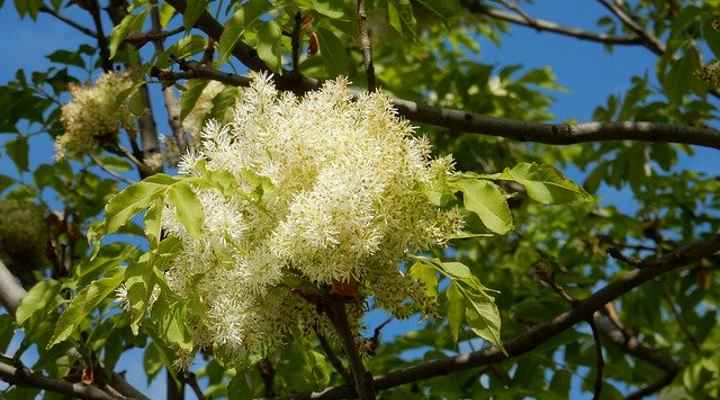
Ash tree flowers
Ash tree foliage is dark green in spring and summer. In fall, when the temperature cools, ash tree foliage turns a spectacular yellow before turning a purplish-red. The many beautiful features of ash trees—the leaves, bark, branches, and foliage—make them highly ornamental trees.
Ash Tree Varieties
Ash trees (Fraxinus) grow throughout North America, Europe, and Asia. All the ash tree varieties are related to olive trees that are also in the woody plant family Oleaceae.
Here are some of the most common varieties of ash tree:
- White ash tree (Fraxinus americana). The American ash tree or white ash has green leaves with bluish-green undersides. White ash trees grow in a pyramidal shape.
- Black ash tree (Fraxinus nigra). Black ash is a medium-sized, slow-growing tree with scaly gray bark and long leaves.
- Green ash tree (Fraxinus pennsylvanica). Also called red ash, the green ash tree grows throughout North America. The deciduous tree grows up to 80 ft. (24 m), and its green foliage turns golden yellow in the fall.
- Arizona ash tree (Fraxinus velutina). The Arizona ash or velvet ash tree is a small deciduous tree. Arizona ash trees have rough gray bark and pinnate leaves containing seven leaflets.
- Texas ash tree (Fraxinus albicans). Texas ash trees are small trees growing up to 32 ft. (10 m) tall. Texas ash trees are similar to white ash trees, but they have smaller leaves.
Ash Tree Bark

Ash tree bark
Ash tree bark is light gray with recognizable diamond-shaped patterns. When ash trees are young, the bark is smooth. As species of ash trees mature, the bark becomes rougher and develops shallow fissures. Mature ash bark is a dark gray, resembling a mature oak tree.
Ash Tree Leaves

Ash tree young leaves (left) and mature Leaves (left)
Ash tree leaves are compound pinnate leaves with five to nine (sometimes eleven or thirteen) oblong-lanceolate leaflets. The leaflets grow oppositely on the leaf stalk. Ash tree leaves grow to between 8" and 12" (20 – 30 cm) long. The individual leaflets are between 3" and 5" (7.5 – 12 cm) long.
Ash leaves are generally dark green on the upper side and a lighter color on the underside. Some species of trees have tooth-edged leaflets, and other ash trees leaves have smooth edges.
Ash Tree Seeds
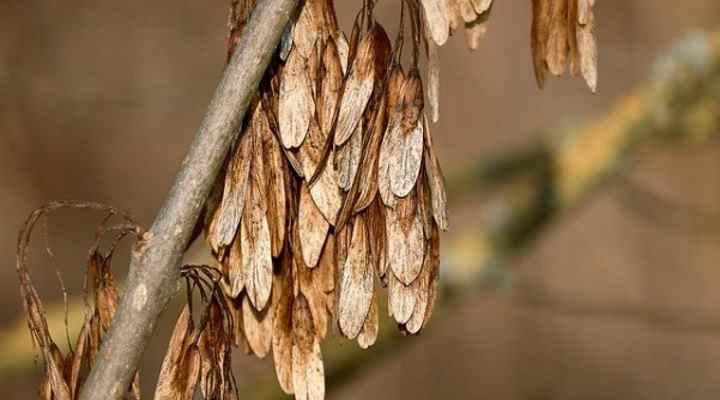
A close up picture of ash tree seeds
Ash tree seeds are a type of winged seed called samaras that grow in clusters on the stems. The paddle-shaped seeds hang down from branches and can look like groups of small leaves. Ash tree seed clusters can be light green or brown. Seeds from ash trees are similar to maple seeds.
Ash Tree Identification
You can identify ash trees by their large, pinnately compound leaves that usually have five or seven leaflets. Ash tree bark is easy to recognize with its ridges growing in a crisscross pattern that forms diamond shapes. Ash tree branches grow oppositely from each other and not alternately.
Types of Ash Trees (With Pictures)
Let's look in more detail at the various features of common ash trees. Along with descriptions of the bark and leaves, pictures of ash trees will help identify varieties of trees in the Fraxinus genus.
Arizona Ash Tree or Velvet Ash (Fraxinus velutina)
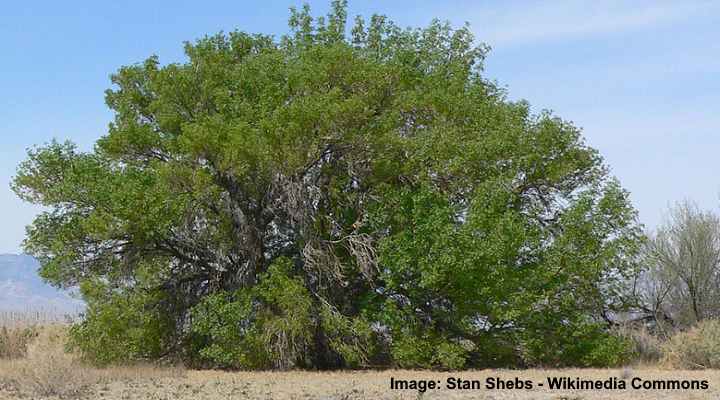
Arizona ash tree (Fraxinus velutina)
Arizona ash trees are a medium species of shade trees that grow up to 50 ft. (15 m). This fast-growing ash tree has gray-brown bark, leaves with serrated margins, and small clusters of spring flowers. Arizona ash trees have seeds that are 1" (3 cm) long.
Other common names for Fraxinus velutina include velvet ash, leatherleaf ash, and Modesto ash.
- Native area: South-western United States
- USDA growing zones: 7 to 11
- Height: 30 to 50 ft. (9 to 15 m)
- Sun exposure: Full sun
Ash tree leaves: Arizona ash tree leaves are 4" to 10" (10 – 25 cm) long. Each leaf contains five or seven leaflets that have finely serrated margins.
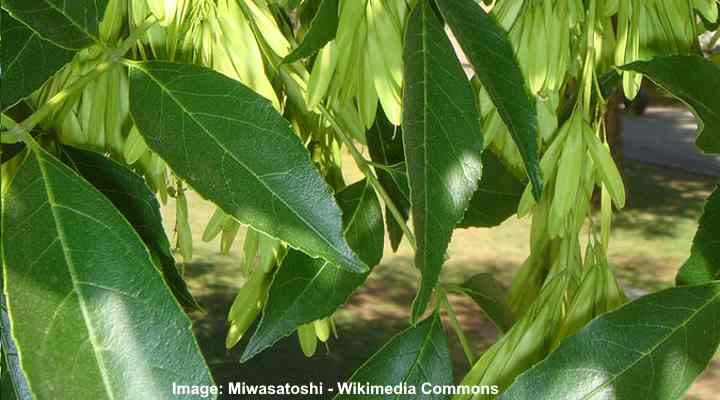
Arizona ash tree leaves and seeds
Ash tree bark: Arizona ash tree bark is gray-brown with fissures in the shape of diamonds and a rough texture.
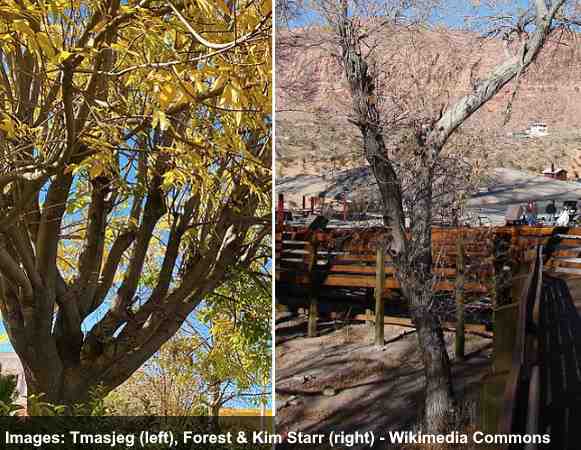
Bark of mature and young Arizona ash trees
White Ash Tree (Fraxinus americana)
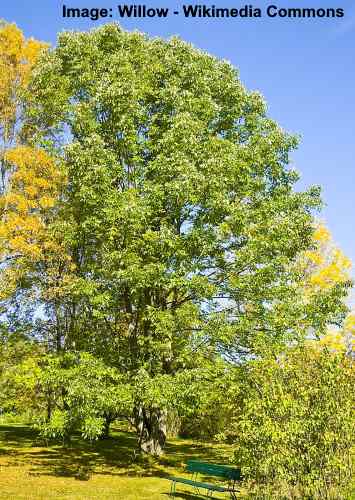
White ash tree (Fraxinus americana)
White ash trees are beautiful deciduous trees with a stunning oval growth habit. The dark green leaves, silvery brown bark, and purple spring flowers give this ash tree year-long interest. White ash trees also produce winged seeds that are 2.5" (5 cm) that grow in clusters in the fall.
White ash trees are also called American ash trees. The ash hardwood is suitable for making baseball bats, hockey sticks, oars, and toys.
- Native area: Eastern North America
- USDA growing zones: 3 to 9
- Height: 60 to 80 ft. (18 – 24 m)
- Sun exposure: Full sun
Ash tree leaves: White ash tree leaves are pinnate compound leaves with five to nine leaflets. The oblong leaflets have dark-green upper sides and light bluish-green undersides. White ash leaves turn yellow or red in the fall.
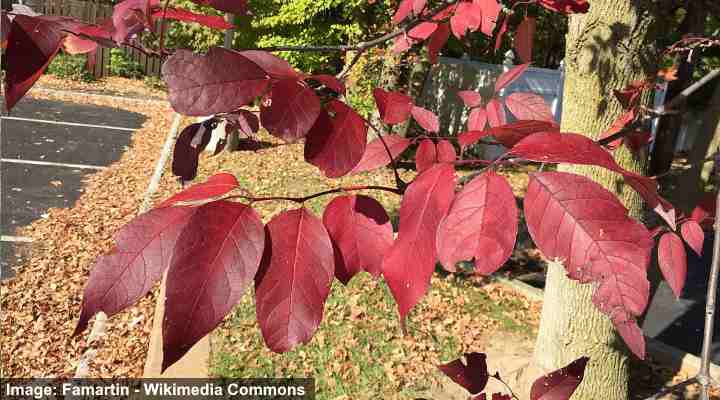
White ash autumn leaves
Ash tree bark: White ash tree bark is attractive silvery-brown with typical diamond-shaped furrows and a rough texture.
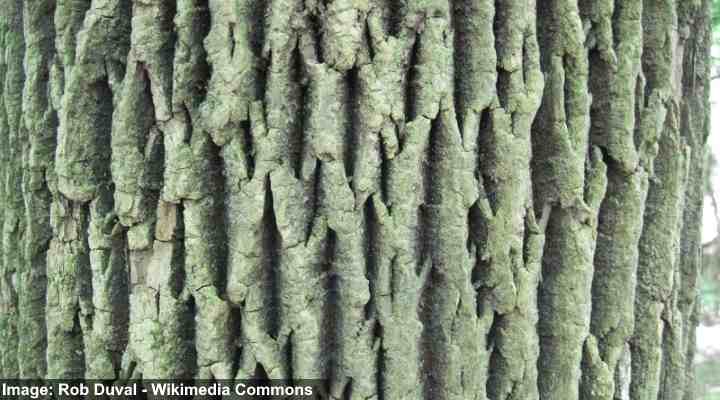
White ash bark
Green Ash Tree (Fraxinus pennsylvanica)

Green ash tree (Fraxinus pennsylvanica)
Green ash trees are medium-sized trees with a straight trunk. This native ash tree has a dense rounded crown of leafy, medium-green foliage. The ash tree's expansive growth makes it ideal as a shade tree. Green ash tree flowers are purple and grow in large clusters.
Common names for green ash trees include swamp ash, red ash, downy ash, and water ash.
- Native area: Eastern and central North America
- USDA growing zones: 3 to 9
- Height: 50 to 70 ft. (15 – 21 m)
- Sun exposure: Full sun
Ash tree leaves: Green ash tree leaves are compound pinnate with five to nine leaflets per leaf. The medium-green leaves turn various shades of yellow in the fall.
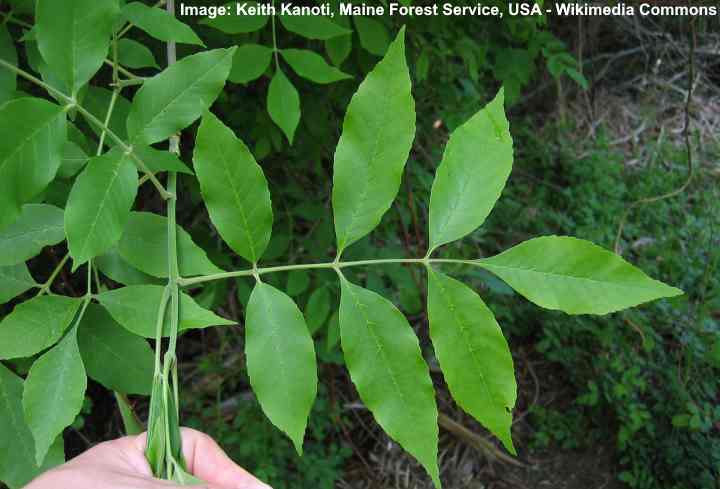
Green ash leaves
Ash tree bark: Green ash tree bark is gray-brown with rough diamond patterns typical of ash trees.
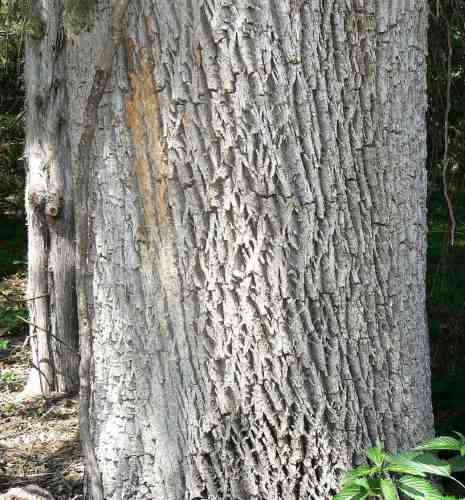
Green ash bark
Black Ash Tree (Fraxinus nigra)
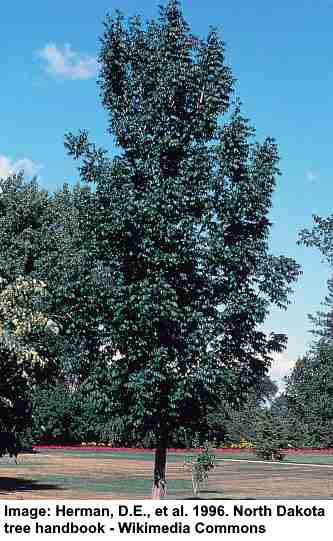
Black ash tree (Fraxinus nigra)
Black ash trees are medium-sized trees growing up to 65 ft. (20 m) with a straight trunk that is 24" (60 cm) in diameter. Black ash typically grows in swampy areas or near streams in deciduous forests.
- Native area: Eastern and northern North America
- USDA growing zones: 3 – 7
- Height: 50 to 65 ft. (15 – 20 m)
- Sun exposure: Full sun to partial shade
Ash tree leaves: Black ash tree leaves have seven to thirteen leaflets on each large leaf. Black ash leaves grow up to 18" (45 cm) long and have finely-toothed edges.

Black ash leaves
Ash tree bark: Black ash tree bark is corky and spongy in gray color. As the black ash trees mature, the fissuring becomes deeper and scaly.
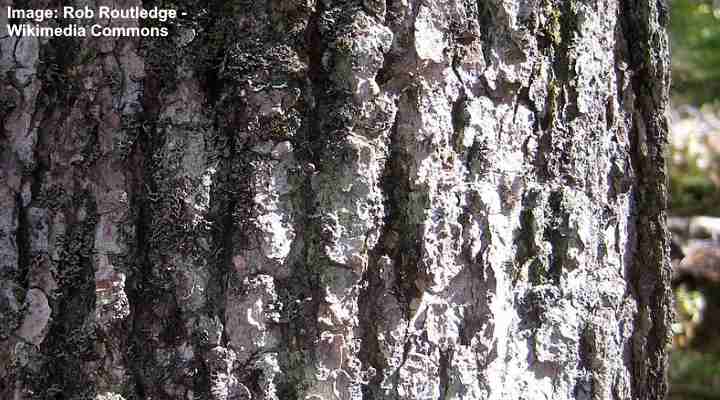
Black ash bark
Blue Ash Tree (Fraxinus quadrangulata)
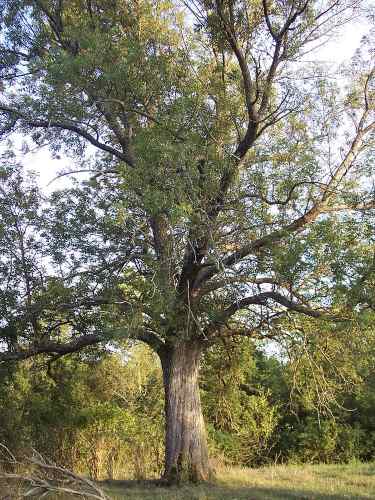
Blue ash tree (Fraxinus quadrangulata)
Blue ash trees are medium-sized trees in the Fraxinus genus. The ash trees don't grow taller than 82 ft. (25 m) and have an irregularly rounded crown.
Blue ash trees get their name from a dark blue or black dye extracted from the tree's inner bark. Its botanical name—quadrangulata—comes from the tree's four-sided twigs.
- Native area: Midwestern United States
- USDA growing zones: 4 to 7
- Height: 50 to 75 ft. (15 – 22 m)
- Sun exposure: Full sun
Ash tree leaves: Blue ash tree leaves grow to between 8" and 15" (20 – 40 cm) long. Each pinnate leaf usually has seven leaflets; however, there can be between 5 and 11 per leaf. Their coarsely-serrated margins help identify blue ash leaves.
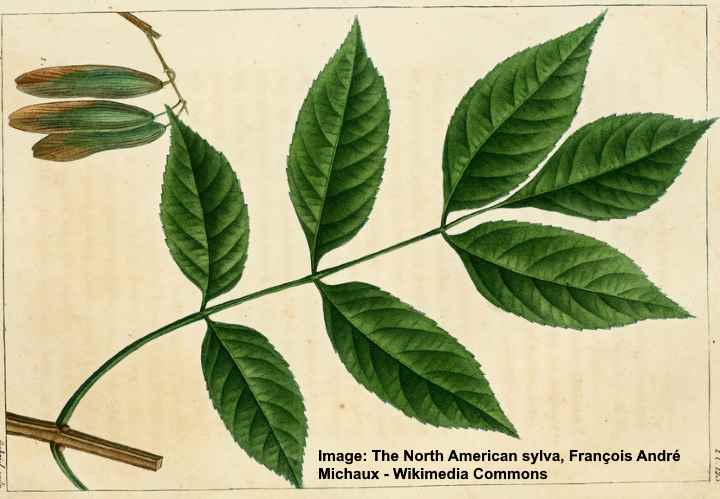
Blue ash leaves
Ash tree bark: Blue ash tree bark has gray bark that is smooth in immature trees but develops irregular fissures as the tree ages.
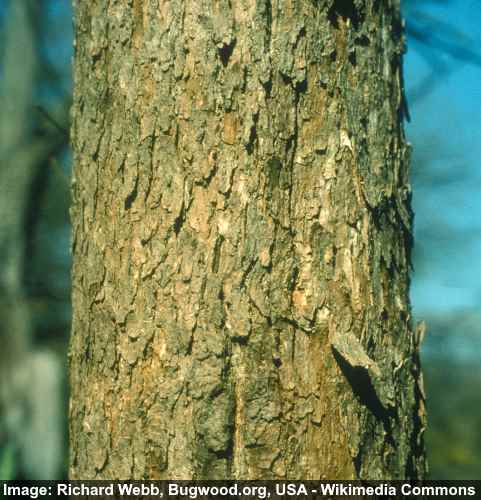
Blue ash bark
California Ash Tree (Fraxinus dipetala)

California ash (Fraxinus dipetala) leaves
California ash trees are large shrubs or small trees that thrive in the California sun. Inconspicuous clusters of fluffy white flowers appear in spring. Because the flowers only have two petals, this ash species is also called the two-petal ash.
- Native area: Southwestern North America
- USDA growing zones: 7 to 10
- Height: 7 – 25 ft. (2 – 7.5 m)
- Sun exposure: Full sun
Ash tree leaves: California ash tree leaves are unusual ash leaves as they have rounded tips. The elongated oblong leaves have between three and nine leaflets with toothed edges. California ash leaves are 2" – 7" (5 – 19 cm) long.
Ash tree bark: California ash tree bark is smooth that becomes fissured as the tree matures.
Carolina Ash Tree (Fraxinus caroliniana)

Carolina ash (Fraxinus caroliniana) leaves
Carolina ash trees are small species of ash trees. Typically growing in swamps and marshy ground, the Carolina ash is the smallest tree in Fraxinus species. The subtropical ash tree is semi-evergreen or evergreen, depending on the climate.
Other names for Carolina ash trees are Florida ash, pop ash, water ash, and swamp ash.
- Native area: South and the southeastern United States
- USDA growing zones: 7 to 9
- Height: 40 ft. (12 m)
- Sun exposure: Full sun
Ash tree leaves: Carolina ash tree leaves are pinnate compound leaves with seven, shiny green leaflets per leaf. The lanceolate leaflets have serrated margins.
Ash tree bark: Carolina ash tree bark is smooth when the tree is immature and gradually develops shallow fissures in square-shaped plates.
Texas Ash Tree (Fraxinus albicans)

Texas ash (Fraxinus albicans) leaves
Texas ash trees are small trees in the Fraxinus genus that grow in dry, rocky soil. The deciduous sun-loving ash tree has small clusters of spring flowers. In the fall, clusters of samaras appear on the tree. Texas ash trees are drought-tolerant trees.
- Native area: Southern United States
- USDA growing zones: 5 to 9
- Height: 32 ft. (10 m)
- Sun exposure: Full sun
Ash tree leaves: Texas ash tree leaves have five leaflets in a rounded shape. The ash tree leaves are between 1" and 3" (3 – 7 cm) long.
Ash tree bark: Texas ash bark is smooth and gray when the tree is young, later becomes furrowed.
European Ash Tree (Fraxinus excelsior)
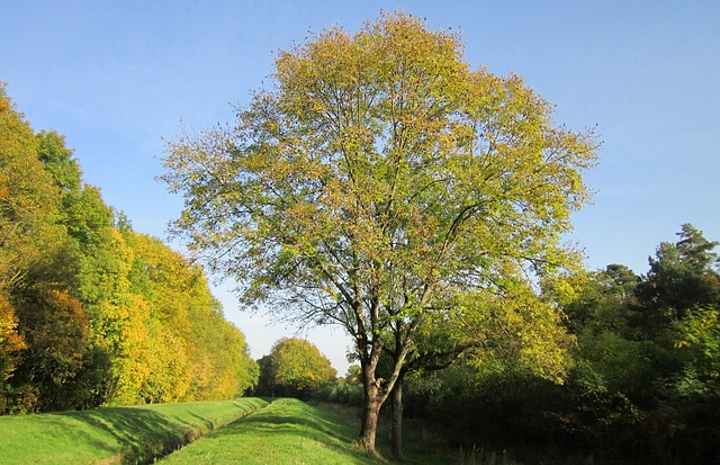
European ash tree (Fraxinus excelsior)
European ash trees are deciduous trees that grow tall and have a dense, rounded crown. This species of ash tree is an excellent shade tree due to its widespread and height. In fact, the tree is sometimes more expansive than it is tall.
The distinguishing feature of the European ash tree is its black buds—most ash trees have brown buds. However, European ash trees aren't as attractive as other species of ash. But the tall ash tree looks spectacular in large open landscapes.
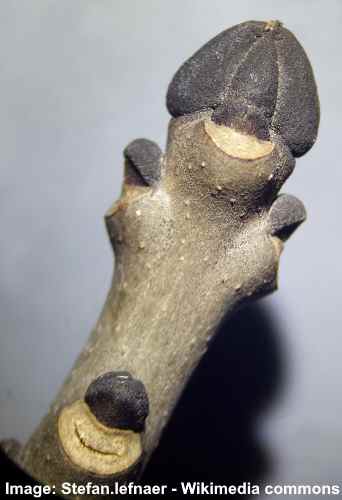
European ash bud
- Native area: Europe and southwestern Asia
- USDA growing zones: 5 to 7
- Height: 70 to 80 ft. (21 – 24 m)
- Sun exposure: Full sun
Ash tree leaves: European ash tree leaves are large dark green leaves with seven to eleven leaflets per leaf. The European ash leaves are 8" to 14" (20 – 35 cm), have a narrow elliptic shape, and serrated margins.

European ash leaves
Ash tree bark: European ash tree has smooth bark when young. As the ash tree matures, the ash tree bark becomes thick with vertical fissures.

European ash bark
Pumpkin Ash Tree (Fraxinus profunda)
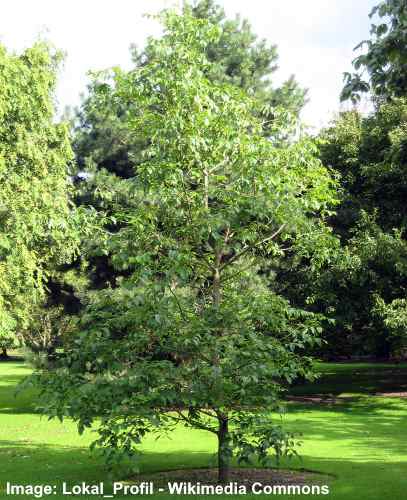
Pumpkin ash tree (Fraxinus profunda)
Pumpkin ash trees are tall deciduous trees native to the eastern United States. These large ash trees grow between 60 to 80 ft. (18 – 24 m) tall. Pumpkins ash trees have large leaves up to 18" (45 cm) long. Each leaf has seven or nine lanceolate-shape leaflets. Pumpkin ash bark is gray, thick, and fissured.
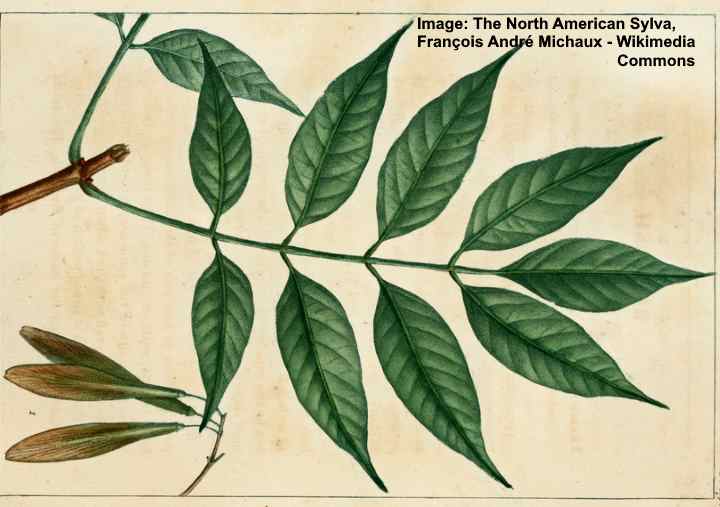
Pumpkin ash leaves
The pumpkin ash tree gets its common name from the way the trunk bulges, similar to a pumpkin.
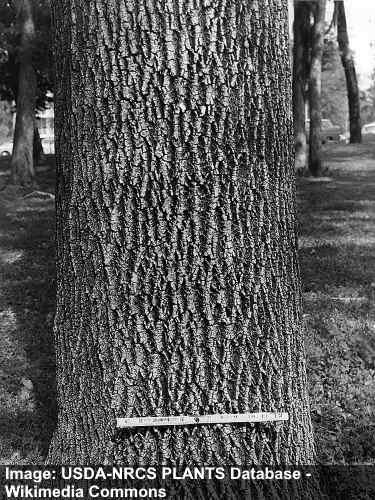
Pumpkin ash bark
Manchurian Ash Tree (Fraxinus mandshurica)
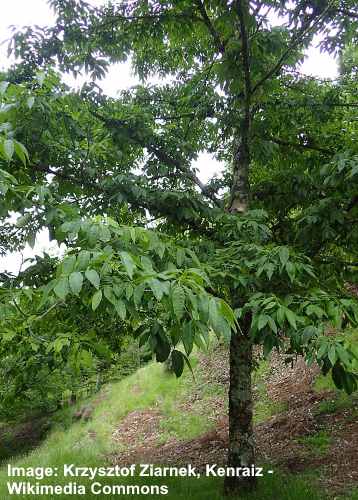
Manchurian ash tree (Fraxinus mandshurica)
Manchurian ash trees are native to northeastern Asia that typically grow between 40 and 50 ft. (12 – 15 m) tall. The pinnate compound leaves on these ash trees are 2" to 8" (5 – 20 cm) long with seven to thirteen leaflets. These Asian ash trees have smooth, gray bark that develops slight fissuring as the tree grows.
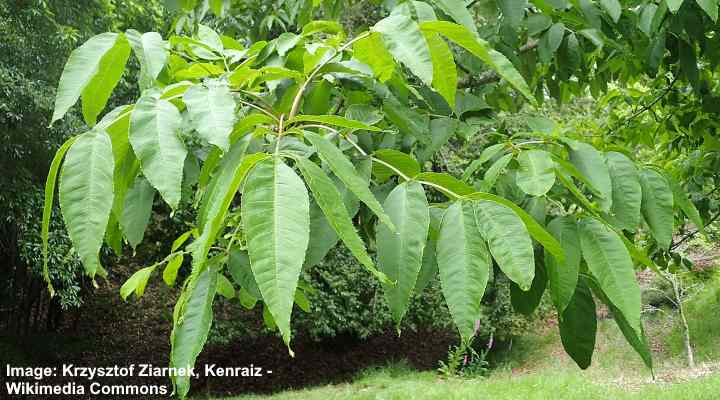
Manchurian ash leaves
Manchurian ash trees thrive in full sun grown in zones 3 to 6. Manchurian ash trees are similar in appearance to black ash trees.
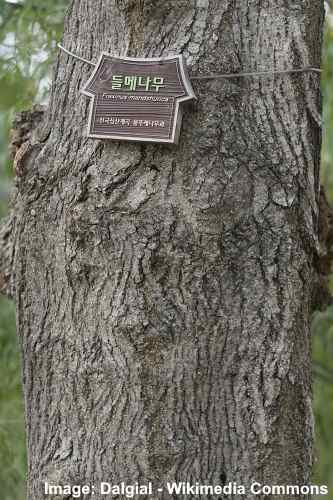
Manchurian ash bark
Manna Ash Tree (Fraxinus ornus)
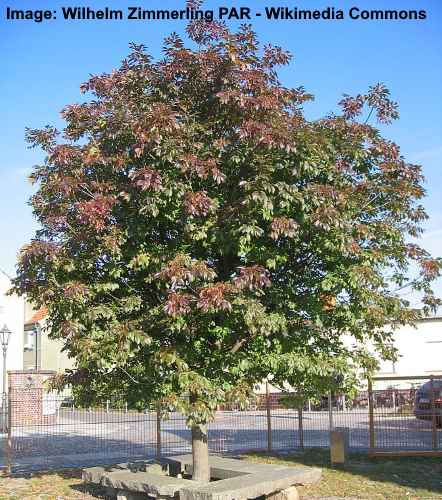
Manna ash tree (Fraxinus ornus)
Also called the South European flowering ash tree, the manna ash is a medium-sized ash tree. This ash species grows to between 50 and 82 ft. (15 – 25 m). The large matte green pinnate leaves have five to nine broad, ovoid leaflets with slightly serrated margins. Unlike other species of ash trees, manna ash bark remains smooth without fissuring as the tree matures.

Manna ash leaves
Manna ash trees or flowering ash trees thrive in zones 6 to 9.
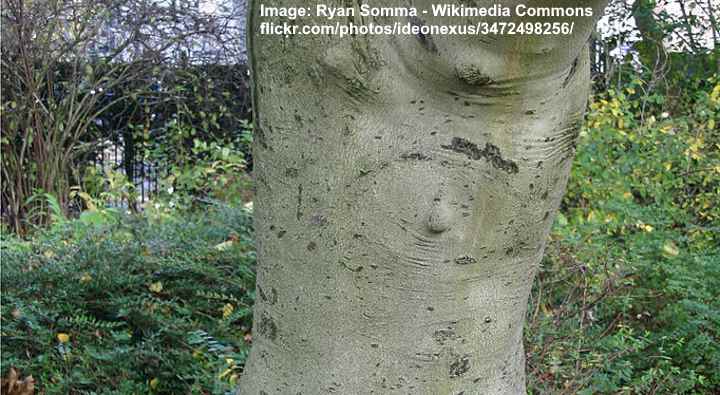
Manna ash bark
Narrow Leaf Ash Tree (Fraxinus angustifolia)
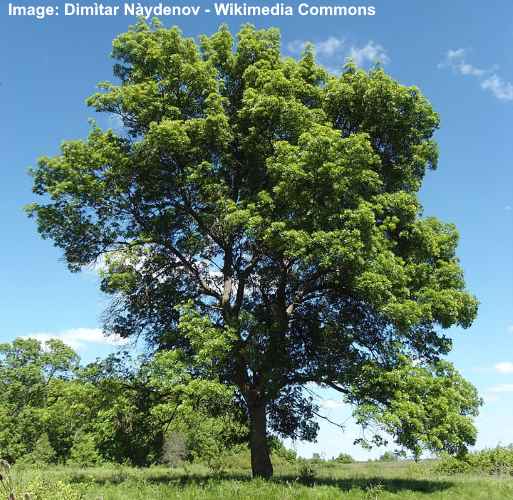
Narrow leaf ash tree (Fraxinus angustifolia)
Narrow-leafed ash trees are medium-sized deciduous trees native to Europe, North Africa, and southern Asia. These ash trees grow to between 65 – 98 ft. (20 – 30 m) tall and have cracked gray bark and large distinctively narrow leaves with three to thirteen slender long leaflets.
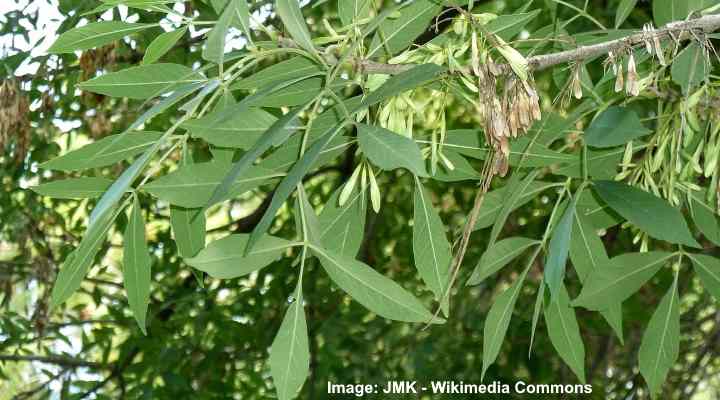
Narrow leaf ash tree foliage
Narrow-leafed ash trees thrive in zones 5 to 9.
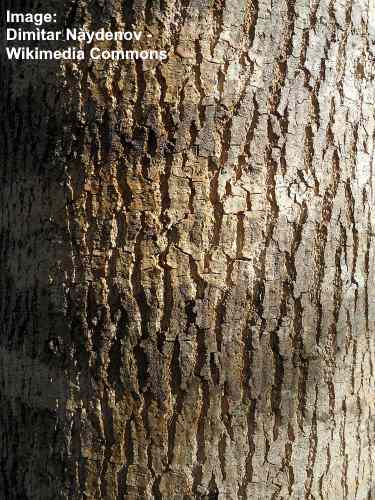
Narrow leaf ash tree bark
Gregg's Ash Tree (Fraxinus greggii)
Also called the little leaf ash tree, Gregg's ash tree is a deciduous tree native to southern North America. This ash tree is a small multi-stemmed ash tree with smooth gray bark. Gregg's ash trees are a semi-evergreen species with lance-shaped leaves that have serrated edges.
Gregg's ash trees grow up to 20 ft. (6 m) tall and 15 ft. (4.5 m) wide. These ash trees grow in USDA zones 7 to 10.
Related articles:
- Sycamore Trees: Leaves, Bark, Types – Identification Guide
- Varieties of Arborvitae Hedges, Trees, and Shrubs
- Amazing Types of Redbud Trees
Read Next
What Color Do Ash Tree Leaves Turn in the Fall
Source: https://leafyplace.com/ash-tree-types-bark-and-leaves/